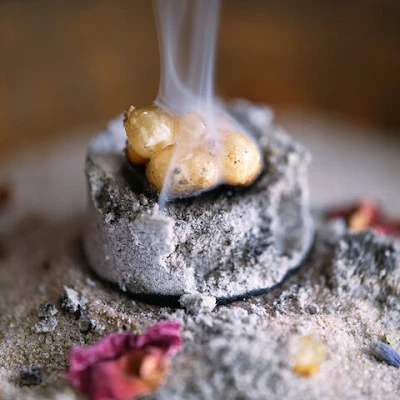
Frankincense, renowned for its aromatic gum resin, has been used globally as incense in religious ceremonies for centuries. The earliest recorded use dates back to a 15th-century BC inscription on the tomb of Egyptian queen Hatshepsut. The Ancient Egyptians not only burned frankincense as incense but also ground the charred resin into a powder called kohl, used to create the distinctive black eyeliner seen in their art.
Archaeological evidence of incense burning traces back to Egypt’s Old Kingdom, where spoon-shaped incense burners with long handles have been discovered. However, the exact resin used remained unidentified until Dr. Richard Evershed and colleagues from the University of Bristol chemically characterized frankincense from the archaeological record at the site of Qasr Ibrim in Egyptian Nubia.
In Jewish tradition, ceremonial incense comprised four ‘sweet scents,’ with pure frankincense being one of them. It is frequently mentioned in the Pentateuch, used in the meet offering, and presented with the showbread every Sabbath. Additionally, frankincense, along with other spices, was stored in a great chamber of the House of God at Jerusalem.
The frankincense tree, or Boswellia, grows up to five meters tall with a sturdy trunk and dense, intertwined twigs. Native to Yemen’s coastal regions and mountain slopes, the tree’s leaves are twisted with thin crusts. Today, frankincense is used in painting, coating, the perfume industry, and as a remedy for coughs and throat inflammation when boiled in water.
According to Herodotus, 1,000 talents of frankincense were offered annually during the feast of Bel at Babylon’s great altar. The religious use of incense was prevalent in ancient Persia, Babylon, and Assyria. Herodotus also noted that the Arabs annually brought 1,000 talents of frankincense as tribute to Darius. The modern Parsis of Western India continue this ritual of incense. In Roman times, frankincense (referred to as mascula thura by Virgil in the Eclogues) was used in religious ceremonies, state occasions, and domestic life. It was also melted to make a depilatory and mixed with other ingredients to perfume hands, a practice described by Herodotus and referenced in the Book of Judith.
In cold weather, Egyptians warmed their rooms with braziers burning frankincense, benzoin, and aloe wood. The term ‘incense,’ initially meaning the aroma from any odoriferous substance when burnt, has come to be almost exclusively associated with frankincense in Europe, due to its greater availability compared to other aromatics from the East.
The trade of frankincense dates back to the ancient Mediterranean civilizations of Egypt, Greece, and Rome. Biblically famous, frankincense is believed to awaken a sense of union with the divine, offering purifying and relaxing qualities. Its Yang character is thought to strengthen willpower, self-confidence, and determination.
Christian tradition holds that the three wise men brought gold, frankincense, and myrrh to the Christ Child in Bethlehem. The domestication of the camel facilitated a complex trade network that transported these precious resins from remote valleys to markets where kings and emperors competed for the finest grades.

Taksu Rituals stands for the principles of health and sustainability in cosmetics and skincare. We feel strongly that organic is the holy grail in formulating cosmetics, as it brings together the concepts of beauty and wellbeing. When we bring together plant power and green chemistry, we create skincare and haircare that make you feel happy and healthy.
© 2025 by Taksu Wellness Center. Designed by Pesarona Studio.